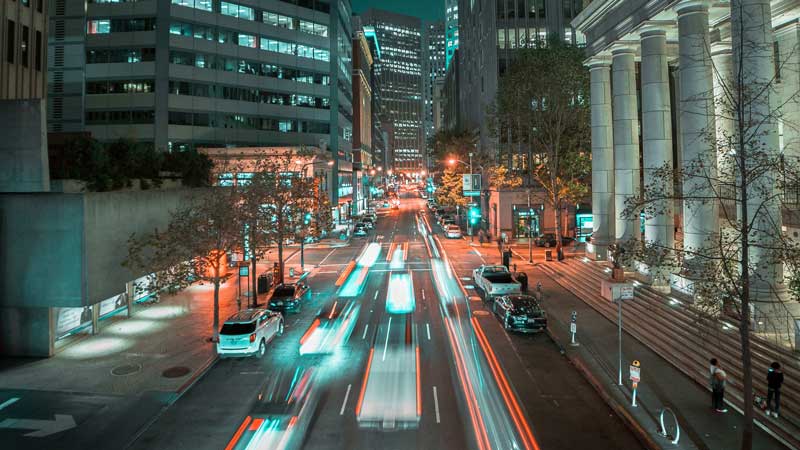If the world is to reach a net zero emissions target by 2050, then the electrification of transport is going to have to play a major role, and at least 50 million electric vehicles will need to be on the road by 2030.
That’s the assessment of the International Energy Agency in the latest version of its World Energy Outlook, a document considered by the established energy industry as something of an annual “bible” for the sector, but which is rapidly – if belatedly – ramping its view of what’s needed to avoid the most dangerous impacts of climate change.
The IEA has previously contented itself with what it called its “sustainable development scenario”, broadly in line with the Paris climate goals of capping average global temperature rises at around 2.0°C.
But that assumed reaching global “net zero emissions” by around 2070, and the IEA now recognises that if the 1.5°C aspirational target contained in the Paris treaty is to be achieved, then net zero needs to be reached two decades earlier.
The IEA scenario to reach this goal assumes a one billion tonne reduction in Co2 emissions from the transport sector over the next 10 years, and much of that will depend on switching the road fleet to mostly battery electric vehicles in that time.

This graph above shows the different assumptions of its various scenarios – (STEPS, more or less policy as usual), SDS (sustainable development) and the new 2050 zero emission target (NZE2050).
“By 2030, more than 50 per cent of passenger cars sold in the NZE2050 (net zero scenario) are electric,” the IEA says, noting that this compares with 2019 figure of around 2.5%.
“The number of electric passenger cars sold in the NZE2050 rises to 25 million in 2025 and more than 50 million in 2030, compared with 2 million in 2019. There is also rapid growth in other zero emissions vehicles such as fuel cell vehicles.”
Indeed, the share of battery electric and fuel cell vehicles in the passenger market reaches nearly 60 per cent by 2030, and this next graph better illustrates the different trajectories.

The IEA says “front-loading” the shift to electric vehicles plays a critically important role in the net zero 2050 scenario.
“This is both because it takes some time for changes in sales to impact the composition of the overall global car fleet, and because further progress after 2030 in eliminating emissions from electricity generation will automatically contribute more to emissions reductions from the on-road electric fleet.”
And the passenger car fleet needs to be a focus of immediate action because emission reduction options in other forms of transport – aviation, shipping and heavy trucks – are still in their infancy, with limited potential for them to contribute meaningful levels of emissions reduction in the period to 2030.
Even so, the IEA says there is a major ramp up in sales of electric and fuel cell electric vehicles (FCEVs) for medium- and heavy-duty trucks over the next decade, with sales growing from negligible levels today to nearly 30% of the total by 2030.
“Ensuring the rate of growth in EVs will require a huge step up in battery manufacturing capacity and a major increase in the capacity of supply chains to provide critical materials,” the IEA notes.
“In recent years, global battery manufacturing capacity has doubled every three-to-four years: in the NZE2050, capacity would need to double every two years. Hydrogen production and distribution infrastructure also ramp up substantially in the NZE2050.”
And it’s not just the shift to electric that can help reduce emissions. The IEA goes into a selection of “behaviourial” changes that could also have a big impact – including working from home at least one day a week, walking more often, driving more slowly and not accelerating so quickly.
“Behaviour changes are therefore essential to achieve the pace and scale of emissions reductions” net zero 2050, and account for around 30% of the difference in emissions between the previous “sustainable development goals” and net zero 2050,” it says.
“Although the behaviour changes in the NZE2050 would have some effect on many aspects of daily life, for the most part they would involve an incremental modification to an activity, such as driving more slowly or adjusting the temperature setting in a home.”

Not that it’s going to be easy.
“Realising the behaviour changes included in the NZE2050 would require concerted efforts by governments and active participation of people,” the IEA notes.
“We estimate that around 60% of the emissions reductions from behaviour changes could be influenced or mandated by governments.
“The details of the measures introduced and the way they are handled would be important: some measures to encourage behaviour changes might be unpopular unless handled in a transparent manner and perceived as being fair and just.
“It is evident in any case that not everyone will be able or willing to implement all of the behaviour changes included in the NZE2050 all of the time. Cultural preferences, affordability and personal welfare would all play a part in determining where, and to what extent, they could be implemented.”
And given the likely reaction of the Murdoch media, which in Australia screamed “carbon tax on wheels” when the government contemplated introducing fuel efficiency standards which would dramatically reduce the fuel bill for families and the country, the chances of such behaviourial measures being widely embraced may not be great.

Giles Parkinson is founder and editor of The Driven, and also edits and founded the Renew Economy and One Step Off The Grid web sites. He has been a journalist for nearly 40 years, is a former business and deputy editor of the Australian Financial Review, and owns a Tesla Model 3.

